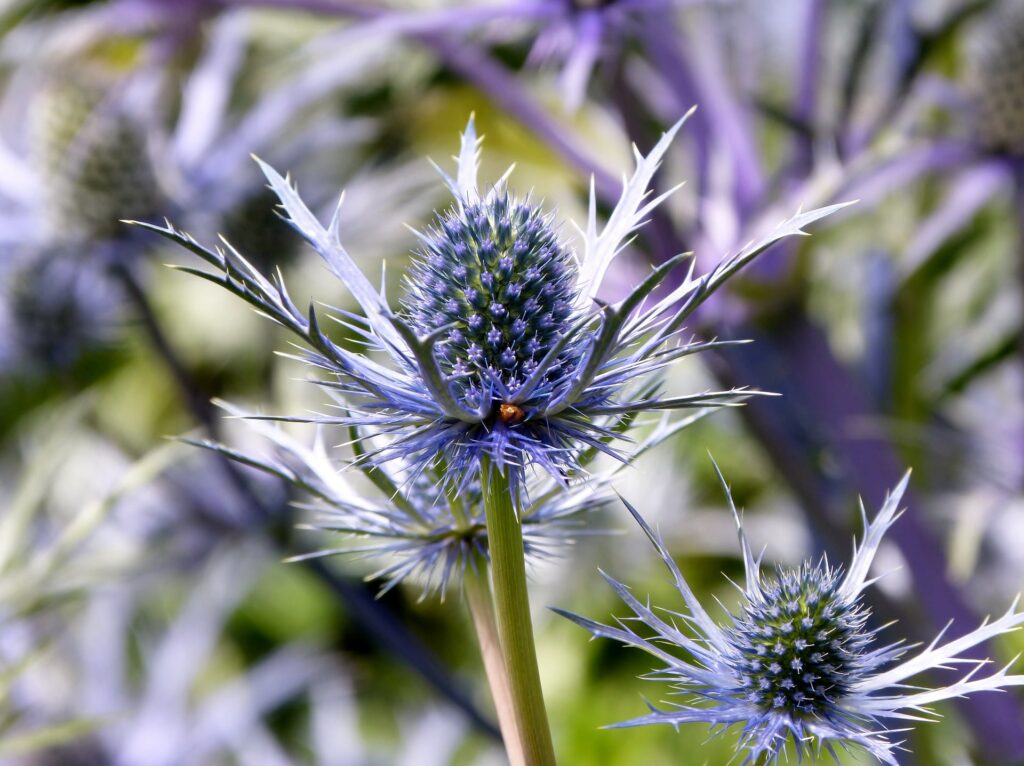Marine Biodiversity
Habitat: Marram Dunes
Species: Sea-holly
Scientific name: Eryngium maritimum
Size: 60cm in height
Colour: Grey-green leaves with blue-green flower heads
Distribution: Widespread around Ireland’s coast
Sea-holly lives up to the expectations of its name as it produces grey-green leaves with many spikes along their edges. The plant can grow to 60cm in height and flowers between July and September, where it produces teasel-like heads of flowers which look similar to that of a thistle. Sand dune habitats will usually be dominated by marram grass nearest to the seashore as this area has the harshest conditions. The hardy nature of sea-holly means that it can also grow close to the shore. The sea-holly’s leaves have a waxy coating which prevents water loss in the dry, salty conditions.
Despite its spiky appearance, sea-holly is attractive for many pollinators who seek out the plant for its nectar.
The flowers of Sea-holly have been accredited for having aphrodisiac properties and were even mentioned by Shakespeare for this reason! The tubular roots were once sugared and sold as sweets



